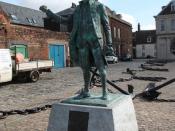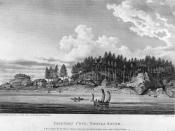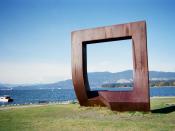George VancouverGeorge Vancouver was an English navigator who completed one of the most difficult surveys ever taken, that of the Pacific coast of North America, from the surroundings of San Francisco northward to present-day British Columbia. At that time he proved that no continuous channel exists between the Pacific Ocean and Hudson Bay, in northeast Canada.
George Vancouver was born in King's Lynn, Norfolk, England on June 22, 1757. He was of Dutch ancestry, descended from the titled Van Coeverden family.
George's father, John Jasper Vancouver, was assistant collector of customs at King's Lynn and his mother, Bridget Berners, came from an old county family.
Vancouver entered the history of exploration by joining the Royal Navy at age 13 and accompanied Captain James Cook on his second and third voyages (1772-75 and 1776-80). In December 1791,Vancouver was appointed commander to the expedition to the northwest coast of North America and was given three assignments: first, to meet a Spanish commissioner at Nootka and settle the damage claims start from the 1789 seizures; secondly, to make a detailed survey of the coast from California to Alaska; and, thirdly, to try to determine once and for all whether an entrance to a Northwest Passage (or a navigable passage that extended far inland) actually existed.
Departing from Falmouth, England on April 1, 1791, Vancouver rounded the Cape of Good Hope, and visited Australia, New Zealand, Tahiti and Hawaii. On April 17, 1792, Vancouver sighted the west coast of North America at 39ÃÂú27' N. By that time, he had intended to explore every bay and outlet of this region, and many times had to use boats rather than his ships to do so, because the inlets were often too narrow for his ships. Vancouver also examined the coast with detailed care, surveying the...


